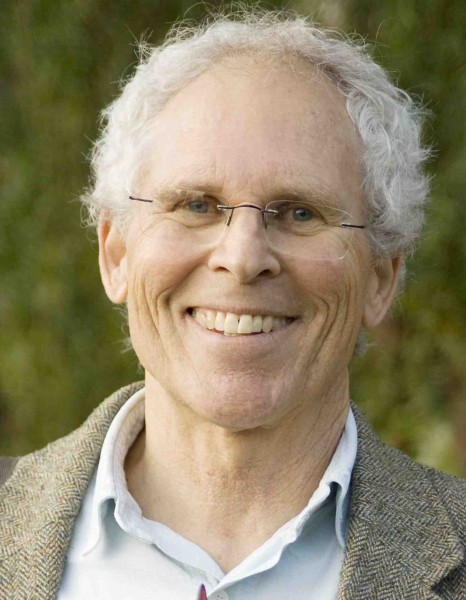Laguna’s French Connection is Hot, Très Chaude!

The late August temperature in the coastal city of Menton, Laguna’s French sister city, is 91 degrees Fahrenheit. That’s cooler than the blistering 95 degrees I’m writing from in the French village of Sallanches. My wife, Ginger, and I are visiting our younger son, Todd, and his French family. He’s Laguna-born and bred and now a French citizen, married to a wonderful woman from Sallanches.
What I find particularly noteworthy about the summer heat wave in southeastern France is that Sallanches is in a valley of the awe-inspiring Alps. This locale is known for many things, such as world-class climbing to the summit of Mont-Blanc, the highest peak in the Alps. Skiing, paragliding, ballooning and competitive bicycling are renowned here: the Tour de France occasionally includes a stretch through Sallanches. What this area is not known for is intense heat in the range of the mid-90s Fahrenheit.
From the backyard of our French family’s chalet, we can see the iconic Mont Blanc, and in the foreground, we can view the Glacier of Armancette. For the past week, I’ve watched its apron of white ice progressively turn gray due to the heat-induced melt. Yesterday, the temperature atop Mt. Blanc was 10 degrees Celsius, above the average for this time of year. The Paris newspaper Le Monde reported that on Aug. 23, temperatures nationwide just set a “new late summer record.”
A different edition of that same Paris newspaper reported: “‘The extreme weather… is having a major impact on human health, ecosystems, economies, agriculture, energy and water supplies,’” said World Meteorological Organization Secretary-General Petteri Taalas. ‘This underlines the increasing urgency of cutting greenhouse gas emissions as quickly and as deeply as possible.’”
What has been the impact of this heat wave on our visit? Accordingly, we’ve had to restrict our outdoor activities to the morning hours. The afternoons are so hot that, to remain safe, we stay indoors until nearly sundown, caring for our two-and-a-half-year-old grandson, Nolan.
To escape the heat locally, our French family took us on an excursion to Park Merlet in the nearby mountains. A businessman created the park, bringing in a menagerie of critters, including ibex, Sika deer, llamas, mouflons (mountain sheep), marmots, chamois (swift goat-antelope creatures) and more. In a small on-site museum, we saw antique tools and information boards describing in detail how “climate change” has been and will continue to cause some vegetation to migrate to higher elevations. Decarbonization is imperative, the public was told. My family translated the French into English for me. From the museum, we walked to the nearby rustic Le Balcon de Merlet restaurant for a lunch of country French cuisine that was très bien.
While here in Sallanches, we received an email from my friend Kelly Osborne (no relation), LBUSD Board of Education clerk, telling us about the exciting and timely new curricular program on environmental literacy. Climate change and the need for decarbonization are featured topics. This new curriculum is an outgrowth of California’s Environmental Principles and Concepts aimed at teaching students the interconnections between people and place, humans and the physical environment.
Exemplifying such interconnections between people and place, our family is a living link of the French bonds with Laguna Beach. The heat waves in both places underscore our shared challenges and future.
Tom Osborne chaired the work group that wrote Laguna Beach’s Climate Protection Action Plan (2009), for which he received the City’s Environmental Award. His wife, Ginger, and he lead the Laguna chapter of Citizens’ Climate Lobby, which advocates for pricing carbon and rebating the revenue to taxpayers. [email protected].





PASS GAS
Dear Tom, thanks for your wonderful article. I grew up in Aix-en-Provence so I can understand how out of place summer temperatures like that must feel. Although I may never return to France, I will return to Laguna Beach and soon, hopefully, we will break ground for our new house on Aster.
In navigating the plan submittal and permit process myself, I was surprised that nearly every professional I engaged with needed to be reminded that the gas line on our lot has been abandoned and our new home will be all electric. It was mentioned several times that I would miss not having natural gas, that I should ”at least put a pipe in the ground so you can use it later.” Even the building department plan checker noted I had not provided a gas pipe schematic, I guess he missed the quarter inch and bolded type where I stated that this was an all electric build. From the Design Review Board on down to the engineers providing my mechanical plans there is a thorough lack of awareness about the effect natural gas is having on our climate.
On the day that I cook my first breakfast in our new home, I may fumble a bit with the induction range but I don’t think this will be much of a sacrifice compared to the sacrifices and hardships we will suffer later. The Laguna I return to has an inordinate amount of luxury homes in the planning stages. I would bet not one is going all electric. I would love to be proved wrong, because I think that is what we have to do, find where we can each make a small difference and hope that it adds up to a big difference in the future.